Related Research Articles

Francis Albert Sinatra was an American singer and actor. Nicknamed the "Chairman of the Board" and later called "Ol' Blue Eyes", he is regarded as one of the most popular entertainers of the mid-20th century. Sinatra is among the world's best-selling music artists, with an estimated 150 million record sales globally.
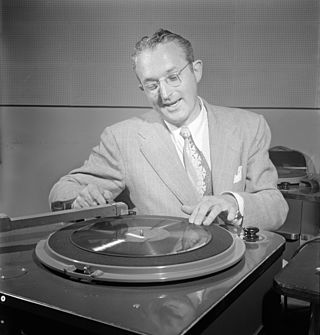
Thomas Francis Dorsey Jr. was an American jazz trombonist, composer, conductor and bandleader of the big band era. He was known as the "Sentimental Gentleman of Swing" because of his smooth-toned trombone playing. His theme song was "I'm Getting Sentimental Over You". His technical skill on the trombone gave him renown among other musicians. He was the younger brother of bandleader Jimmy Dorsey. After Dorsey broke with his brother in the mid-1930s, he led an extremely successful band from the late 1930s into the 1950s. He is best remembered for standards such as "Opus One", "Song of India", "Marie", "On Treasure Island", and his biggest hit single, "I'll Never Smile Again".

"Stardust" is a 1927 song composed by Hoagy Carmichael, with lyrics later added by Mitchell Parish. It has been recorded as an instrumental or vocal track over 1,500 times. Carmichael developed a taste for jazz while attending Indiana University. He formed his own band and played at local events in Indiana and Ohio. Following his graduation, Carmichael moved to Florida to work for a law firm. He left the law sector and returned to Indiana, after learning of the success of one of his compositions. In 1927, after leaving a local university hangout, Carmichael started to whistle a tune that he later developed further. When composing the song, he was inspired by the end of one of his love affairs, and on the suggestion of a university classmate, he decided on its title. The same year, Carmichael recorded an instrumental version of the song for Gennett Records.
"Mack the Knife" or "The Ballad of Mack the Knife" is a song composed by Kurt Weill with lyrics by Bertolt Brecht for their 1928 music drama The Threepenny Opera. The song tells of a knife-wielding criminal of the London underworld from the musical named Macheath, the "Mack the Knife" of the title.
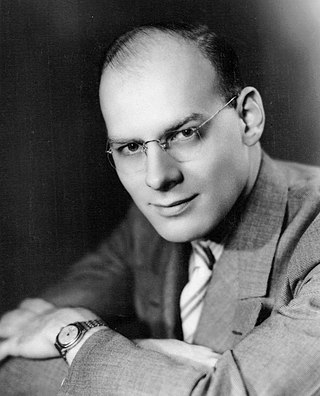
Mitchell William Miller was an American choral conductor, record producer, record-industry executive, and professional oboist. He was involved in almost all aspects of the industry, particularly as a conductor and artists and repertoire (A&R) man. Miller was one of the most influential people in American popular music during the 1950s and early 1960s, both as the head of A&R at Columbia Records and as a best-selling recording artist with an NBC television series, Sing Along with Mitch. A graduate of the Eastman School of Music of the University of Rochester in the early 1930s, Miller began his musical career as a player of the oboe and English horn, making numerous highly regarded classical and popular recordings.
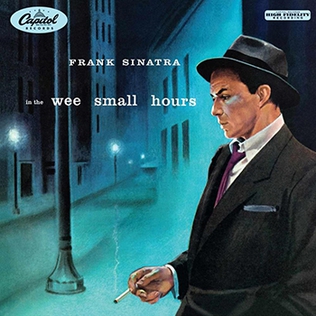
In the Wee Small Hours is the ninth studio album by American vocalist Frank Sinatra. It was released in April 1955 by Capitol and produced by Voyle Gilmore with arrangements by Nelson Riddle. The album's songs deal with themes such as introspection, melancholy, lost love, failed relationships, depression and night life. The cover artwork reflects these themes, portraying Sinatra alone at night on an eerie and deserted city street awash in blue-tinged street lights.
"It Was a Very Good Year" is a song composed by Ervin Drake in 1961 and originally recorded by Bob Shane with the Kingston Trio. It was made famous by Frank Sinatra's version in D minor, which won the Grammy Award for Best Male Vocal Performance in 1966 and became Sinatra's first number one Adult Contemporary single, also peaking at No. 28 on the Hot 100.
The Great American Songbook is the loosely defined canon of significant 20th-century American jazz standards, popular songs, and show tunes.

Gordon Lee "Tex" Beneke was an American saxophonist, singer, and bandleader. His career is a history of associations with bandleader Glenn Miller and former musicians and singers who worked with Miller. His band is also associated with the careers of Eydie Gormé, Henry Mancini and Ronnie Deauville. Beneke also solos on the recording the Glenn Miller Orchestra made of their popular song "In The Mood" and sings on another popular Glenn Miller recording, "Chattanooga Choo Choo". Jazz critic Will Friedwald considers Beneke to be one of the major blues singers who sang with the big bands of the early 1940s.
"That's Life" is a popular song written by Dean Kay and Kelly Gordon and first recorded in 1963 by Marion Montgomery. The song has an uplifting message that, despite the ups and downs in life, one should not give up but keep positive, because soon one will be "back on top."
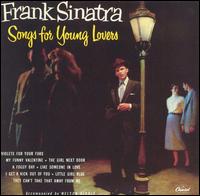
Songs for Young Lovers is the seventh studio album by Frank Sinatra and his first on Capitol Records. It was issued as an 8-song, 10" album and as a 45rpm EP set, but it was the first Sinatra "album" not to have a 78rpm multi-disc-album release. In 2002, it was one of 50 recordings chosen that year by the Library of Congress to be added to the National Recording Registry.

Sinatra–Basie: An Historic Musical First is a 1962 studio album by Frank Sinatra, arranged by Neal Hefti.

"Summer Wind" is a 1965 song, originally released in Germany as "Der Sommerwind" and written by Heinz Meier and German language lyrics by Hans Bradtke. Johnny Mercer re-wrote the song into English along the same themes as the original, which talked of the changing of the seasons using the Southern European sirocco wind as a metaphor. In America, it was first recorded by Wayne Newton and subsequently by Bobby Vinton and Perry Como.
"The Night We Called It a Day" is a popular song and jazz standard. The music was written by Matt Dennis, the lyrics by Tom Adair. The song was published in 1941.
"What's New?" is a 1939 popular song composed by Bob Haggart, with lyrics by Johnny Burke. It was originally an instrumental tune titled "I'm Free" by Haggart in 1938, when Haggart was a member of Bob Crosby and His Orchestra. The tune was written with a trumpet solo, meant to showcase the talents of band-mate Billy Butterfield. Crosby's orchestra recorded "I'm Free" the same day it was written.
Vincent Ned DeRosa was an American hornist who served as a studio musician for Hollywood soundtracks and other recordings from 1935 until his retirement in 2008. Because his career spanned over 70 years, during which he played on many film and television soundtracks and as a sideman on studio albums, he is considered to be one of the most recorded brass players of all time. He set "impeccably high standards" for the horn, and became the first horn for Henry Mancini, Lalo Schifrin, Alfred Newman, and John Williams, among others, with Williams calling him "one of the greatest instrumentalists of his generation." DeRosa contributed to many of the most acclaimed albums of the 20th century, including some of the biggest-selling albums by artists as diverse as Frank Sinatra, Barry Manilow, Frank Zappa, Boz Scaggs, Ella Fitzgerald, Harry Nilsson, Stan Kenton, Henry Mancini, The Monkees, Sammy Davis Jr., and Mel Tormé.
Jules Leonard "Buddy" Kaye was an American songwriter, lyricist, arranger, producer, and author. His songs were recorded by top performers, including Frank Sinatra, Bob Dylan, Sarah Vaughan, Dinah Washington, Ella Fitzgerald, The McGuire Sisters, Glenn Miller, Sammy Kaye, Perry Como, Elvis Presley, Charles Aznavour, Tony Bennett, Cliff Richard, Pat Boone, Harry Belafonte, Bobby Darin, Little Richard, Barry Manilow, Karen Carpenter, Diana Krall, and Dusty Springfield. He scored number-one hits on the Billboard charts in 1945 with "Till The End Of Time", recorded by Perry Como, and in 1949 with "'A' You're Adorable ", recorded by Como and The Fontane Sisters. Among his most recognizable tunes in pop culture are the theme songs to the Famous Studios theatrical cartoons Little Lulu and Little Audrey; the international hit song "Speedy Gonzales", recorded by Pat Boone; and the co-written theme song to the television series I Dream of Jeannie. In 1976, he won a Grammy Award for best children's album for his production of The Little Prince, narrated by Richard Burton.
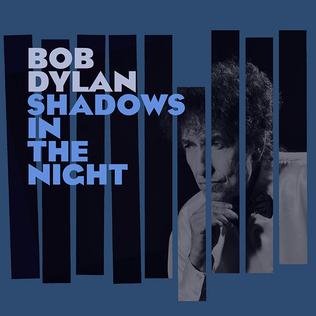
Shadows in the Night is the thirty-sixth studio album by Bob Dylan, released by Columbia Records on February 3, 2015. The album consists of covers of traditional pop standards made famous by Frank Sinatra, chosen by Dylan. Like most of his 21st century output, Dylan produced the album himself under the pseudonym Jack Frost.
"All My Tomorrows" is a 1959 ballad with lyrics by Sammy Cahn and music by Jimmy van Heusen. The song was written for Frank Sinatra. It was introduced in the film A Hole in the Head where Sinatra sings it in the opening credits.
Azure-Te is a blues ballad written in 1952 by lyricist Donald E. Wolf for a Wild Bill Davis tune that reached number 30 on the Billboard Hot 100 chart in September 1952 when covered by Frank Sinatra.
References
- ↑ Albert I. Lonstein; Vito R. Marino (1970). The Compleat Sinatra: Disgography [sic] Filmography, Television Appearances, Motion Picture Appearances, Radio Appearances, Concert Appearances, Stage Appearances. Cameron Publications. p. 3.
- 1 2 Will Friedwald (1995). Sinatra! the Song is You: A Singer's Art. Simon and Schuster. p. 73. ISBN 978-0-684-19368-7.
- ↑ Patrick Burke (August 2008). Come In and Hear the Truth: Jazz and Race on 52nd Street . University of Chicago Press. p. 105. ISBN 978-0-226-08071-0.
- ↑ "Record Possibilities". Billboard. Nielsen Business Media, Inc. 20 May 1944. p. 20.
- ↑ Michael Hann (18 May 2016). "Bob Dylan's new album – as performed by Frank Sinatra, Ella Fitzgerald, Billie Holiday and more". The Guardian . Retrieved 28 April 2020.
- ↑ Hennessy, John (18 February 1980). "Russian champion may be forced to drop out". The Times. No. 60553. p. 9. Retrieved 28 April 2020.
- ↑ John Frayn Turner (2004). Frank Sinatra . Taylor Trade Publications. p. 22. ISBN 978-1-58979-145-9.
- ↑ Put Your Dreams Away: A Frank Sinatra Discography. Greenwood Publishing Group. 2000. p. 11. ISBN 978-0-313-31055-3.
- ↑ "Frank Sinatra Singles List". Frank Sinatra Family. Retrieved 30 April 2020.
- ↑ "Jersey Fan Leading Expert on Frank Sinatra Discography". Billboard. Nielsen Business Media, Inc. 20 November 1965. p. 84S.